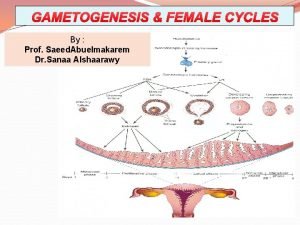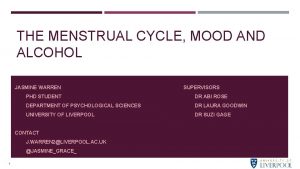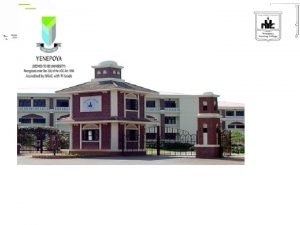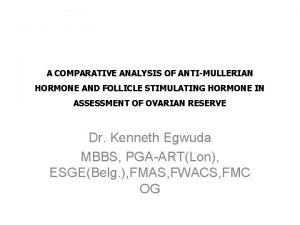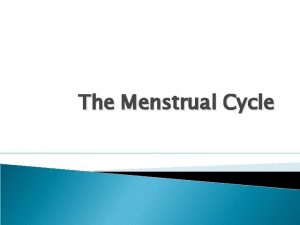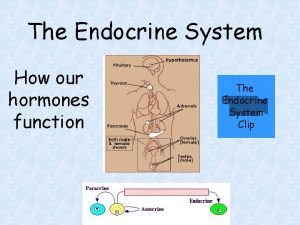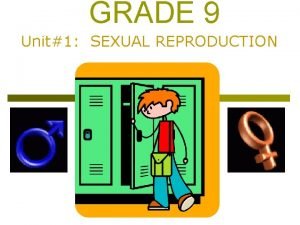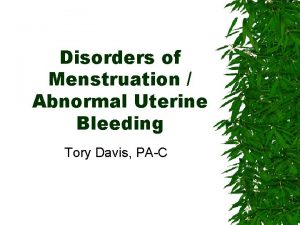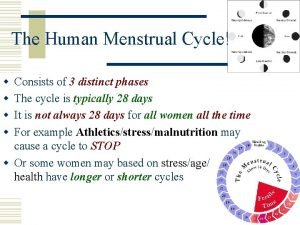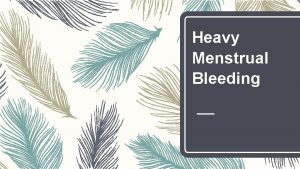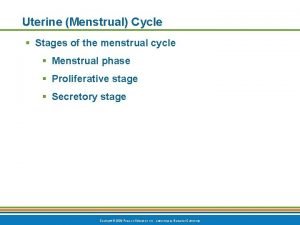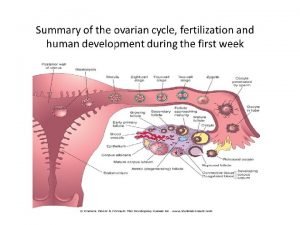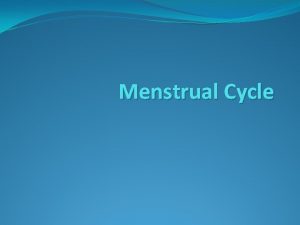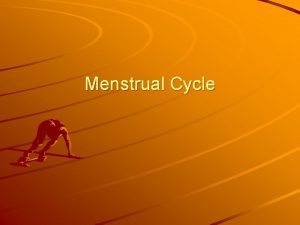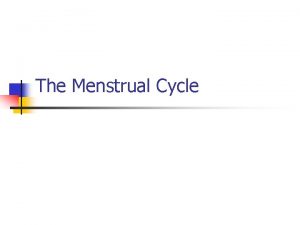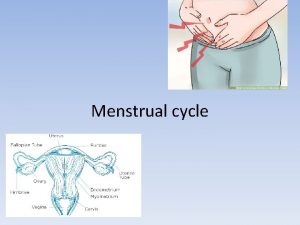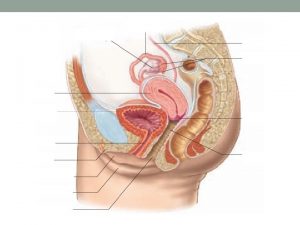The menstrual cycle The menstrual cycle is a










- Slides: 10

The menstrual cycle

The menstrual cycle is a repeating process in the female body that begins during puberty – it plays an important role in human reproduction and begins with a female having her period. There are four stages to the cycle. Stage 1 - this is when the uterus lining breaks down and the person bleeds, it lasts for about four days. Stage 2 - the lining of the uterus builds up between days 4 -14. It builds a spongy thick layer that is full of blood vessels. After this it is ready to receive a fertilised egg. Draw this into your book and add the stages Stage 3 - An egg is released from the ovary on day 14 of the cycle. This is called ovulation. Stage 4 - The lining is maintained for 14 days until day 28. If no fertilised egg lands arrives then the lining breaks down and the cycle starts again.

The menstrual cycle is controlled by hormones. Copy this table into your books neatly. Hormone What the hormones does Causes an egg to mature in one of FSH (follicle-stimulating hormone) the ovaries. LH (Luteinising hormone) Oestrogen Progesterone Causes the release of the egg (ovulation). These hormones are both involved in the growth and maintenance of the uterus lining.

That is lesson 1 complete! Any questions please e-mail me.

Controlling fertility What is fertilisation and reproduction? Fertilisation is the joining together of a sperm cell and egg cell which will form a zygote eventually developing into a baby. Usually in humans and most other animals this happens through sexual intercourse.

Controlling fertility Contraception is used to stop fertilisation happening and avoid the female becoming pregnant. There are several different methods, some which are controlled by hormones and some which aren’t. Key words: Fertility: how easy it is for a woman to get pregnant. Contraceptives: things that prevent pregnancy. Hormones: chemical messengers – these can be used in contraceptives. Write these into your books or print them out.

Hormonal methods of contraception – write these into your books or print them out. Oral methods • ‘The pill’ is an oral contraceptive containing hormones. It contains hormones which stops the FSH from being released which stops the egg maturing. • They are over 99% effective however they can have side effects including headaches and making you feel sick. Progesterone release methods • Woman can wear patches, have implants under their arms or injections. • They last different amounts of time; 1 week for the patch, 2 -3 months for the injection and up to three years for the implant. • They work by stopping the egg maturing and being released from the ovaries (ovulation). Intrauterine devices (IUD’s) • IUD’s are a t-shaped device that are inserted into the uterus. • They stop fertilised eggs from implanting in the uterus wall.

Other methods of controlling fertility - write these into your books or print them out Hormonal methods of contraception often have side effects for the woman. There are other methods that can be used which do not affect the hormones of the woman. Barrier methods • These simply prevent a barrier between the sperm and egg so they do not meet • The most common is the male condom which is worn over the end of the penis • Female condoms are worn inside the vagina • They are the only form of contraception which also protects against sexually transmitted diseases (STD’s). • A diaphragm is a shallow plastic cup that fits over the entrance to the uterus. It is used alongside spermicide which is a chemical that kills the sperm cells.

Even more methods of avoiding pregnancy - write these into your books or print them out Sterilisation: • In females this involves cutting or tying the fallopian tubes • In males it is cutting or tying the sperm ducts and is called a vasectomy • They are both permanent (lasts for life) Natural methods: • Some people avoid having sexual intercourse during the stage of the menstrual cycle when a woman is most fertile. This is referred to as the rhythm method. • Others use the withdrawal method which involves a male removing his penis before sperm are released • Neither of these are very effective and are only really used by people who this other methods are unnatural and may go against their religious beliefs Abstinence • The only way to absolutely guarantee that a sperm and an egg do not meet is to not have sexual intercourse at all. This is called abstinence. • Some people choose to do this until after they are married for religious reasons and this should always be respected as their choice.

That is lesson 2 complete! Please send photographic evidence to Mr Greenwood.
